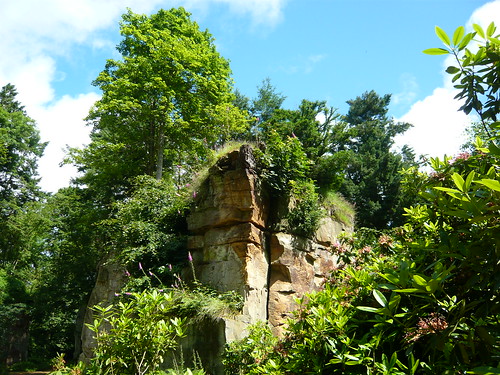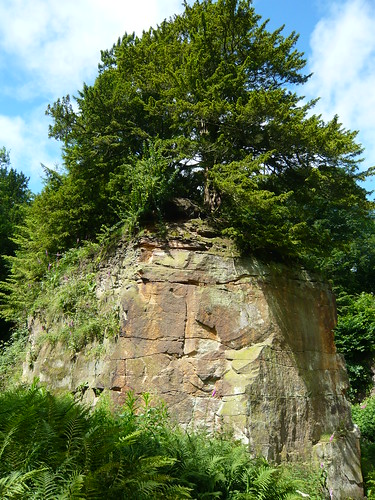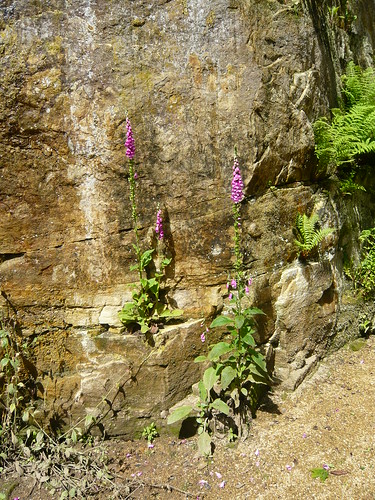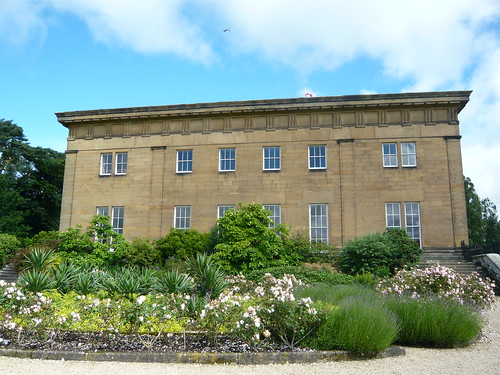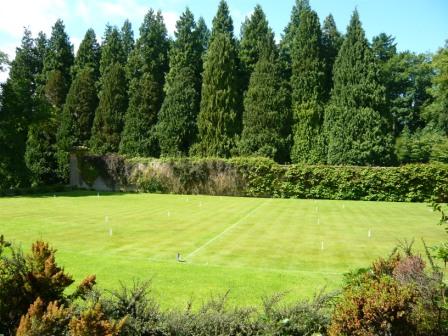
Quarry Gardens at Belsay Hall & Castle
A ‘Quarry Garden’ had not registered with my horticultural subconscious until I visited Belsay Hall garden an English Heritage property in Northumberland. Serendipity or deliberate planning has created a fantastic garden space for the 21st Century from a site first developed as a garden at the end of the 18th century.
There are influences from other famous gardeners including Humphry Repton, William Robinson and the designers of the previous 17th century gardens and manor house.
Conceiving a Quarry Garden
There are a couple of paths through the quarry leading to the old castle which hosts grand views of the estate from the battlements. These paths go through the West Quarry garden and the East Quarry gardens. see photos
Sir Charles Monck had the hall built in 1817 from local stone dug from his own quarry between the Castle and Hall. Creating a quarry garden was in his mind as the stone was excavated with great care. If the stone had simply been blasted out we would just have a hole in the ground.
The sheer rock sides form a ravine with what has developed into a dramatic garden of significant proportions. The planting of evergreen trees like yews and pines on the rim of the quarry has increased the sense of height whilst the lower story has attracted many plants including Rhododendrons.
The lush, jungle atmosphere was later enhanced by Monck’s grandson, Sir Arthur Middleton, who planted many more exotic and rare shrubs that liked the conditions created by the microclimate within the quarry. Majestic trees are complemented by a collection of ferns that Sir Charles Monck was renown for collecting.
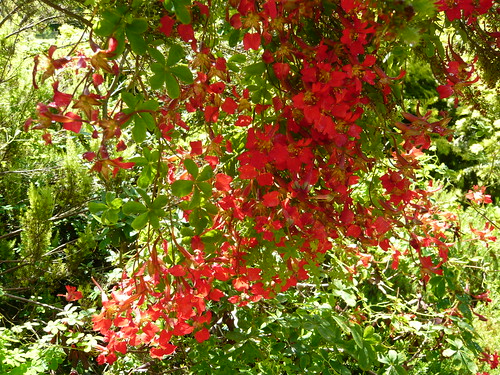
This is Trapoleum Tuberosun a relative of the nasturtium twining through a tree heather in the more formal part of the garden.
Gardeners Tips
- Visit in spring when snowdrops and other bulbs, planted in the early 18th century, are in full bloom.
- Time your visit to see the display of Rhododendrons in full spate.
- Be prepared for a walk through the surrounding woods and through the Fern walk.
- The hall contains no furniture but the architecture is worth studying, the tea rooms are worth eating in and the rest of the garden is designed for a fine day.
